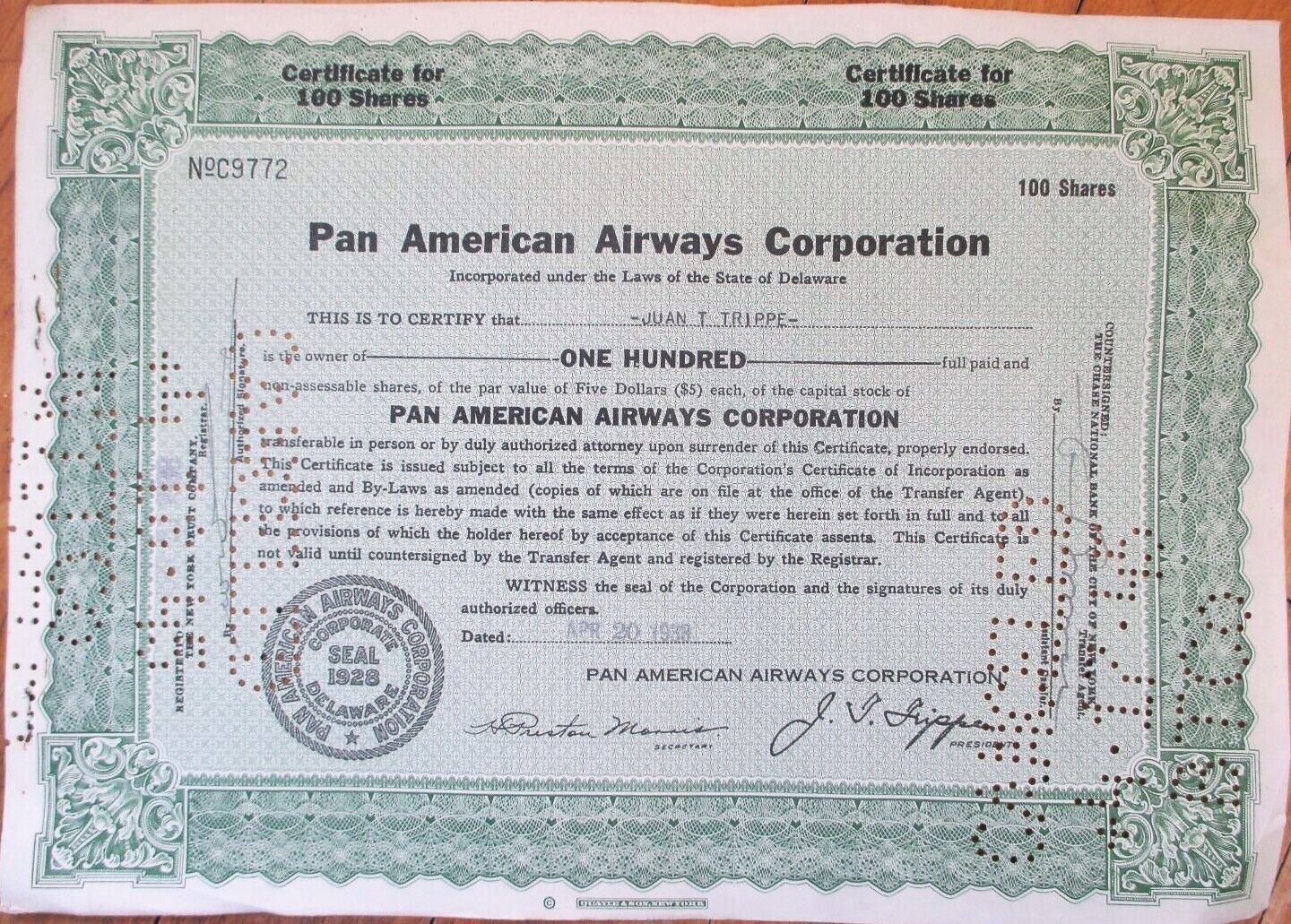-40%
1850s JOHN A. DIX-Signed Stock Certificate: Mississippi & Missouri Rail Road Co.
$ 65.99
- Description
- Size Guide
Description
This is a stock certificate for the 'Mississippi & Missouri Rail Road Company.' Partially-isssued, circa 1850s. It was printed by Danforth, Wright & Co. in an attractive dark orange/brown and has four beautiful vignettes. It is signed by John Adams Dix (1798-1879) as president. It measures about 9.5" x 6" and is in clean condition.From Wikipedia on Dix:
John Adams Dix (July 24, 1798 – April 21, 1879) was an American politician from New York. He served as Secretary of the Treasury, U.S. Senator, and the 24th Governor of New York. He was also a Union major general during the Civil War.
Early life and career
Dix was born in Boscawen, New Hampshire. He joined the Artillery as a military cadet at the age of 14. He served in the United States Army until 1828, and attained the rank of captain in 1825.
In 1826, Dix married Catherine Morgan, the adopted daughter of Congressman John J. Morgan, who gave Dix a job overseeing his upstate New York land holdings in Cooperstown. Dix and his wife moved to Cooperstown in 1828, and he practiced law in addition to overseeing the land holdings. In 1830, he was appointed by Governor Enos T. Throop as Adjutant General of the New York State Militia, and moved to Albany, New York. He was Secretary of State of New York from 1833 to 1839, and a member of the New York State Assembly (Albany Co.) in 1842.
U.S. Senator
Dix was elected as a Democrat to the United States Senate to fill the vacancy caused by the resignation of Silas Wright, Jr., and held office from 1845 to 1849. In November 1848, he was the Barnburner/Free-Soil candidate for Governor of New York, but was defeated by Whig Hamilton Fish. In February 1849, he ran for re-election to the U.S. Senate as the Barnburner's candidate, but the Whig majority of the State Legislature elected William H. Seward.
Railroad president and postmaster
In 1853 Dix was president of the Mississippi and Missouri Railroad. He was appointed postmaster of the City of New York and served from 1860 to 1861.
In addition to his military and public duties, Dix was the president of the Union Pacific from 1863 to 1868 during construction of the First Transcontinental Railroad. He was the figurehead for rail baron Thomas C. Durant, in both of his railroad presidencies.
Civil War service
Dix was appointed United States Secretary of the Treasury by President James Buchanan in 1861. At the outbreak of the Civil War, he sent a telegram to the Treasury agents in New Orleans ordering that: "If any one attempts to haul down the American flag, shoot him on the spot." Although the telegram was intercepted by Confederates, and was never delivered to the Treasury agents, the text found its way to the press, and Dix became one of the first heroes of the North during the Civil War. The saying is found on many Civil War tokens minted during the war, although the wording is slightly modified.
Major General
At the start of the American Civil War, Dix was appointed a major general in the New York Militia. He joined the Union Army as the highest ranking major general of volunteers during the war, effective May 16, 1861; also appointed on that day were Nathaniel P. Banks and Benjamin Franklin Butler, but Dix's name appeared first on the promotion list, meaning that he had seniority over all major generals of volunteers. In the summer of 1861, he commanded the Department of Maryland and the Department of Pennsylvania. His importance at the beginning of the Civil War was in arresting and thereby preventing the Maryland legislature from meeting. This prevented Maryland from seceding, and earned him President Lincoln's gratitude. That winter, he commanded a regional organization known as "Dix's Command" within Maj. Gen. George B. McClellan's Department of the Potomac. Dix commanded the Department of Virginia from June 1862 until July 1863, and the Department of the East from July 1863 until April 1865.
On July 22, 1862, Dix and Confederate Maj. Gen. D. H. Hill concluded an agreement for the general exchange of prisoners between the Union and Confederate armies. This agreement became known as the Dix-Hill Cartel.
On October 10, 1862, Lincoln’s Secretary of the Navy, Gideon Welles wrote that “a scheme for permits, special favors, Treasury agents, and improper management” existed and was arranged by Treasury Secretary Salmon P. Chase for General John A. Dix. The motive of Chase appeared to be for political influence and not for financial gain.
Considered too old for field command, although some believe Dix's most distinguished contribution during the war was the suppression of the New York Draft Riots in July 1863, the rioting had already subsided by the time he replaced General Wool. He was also active in the defense of Suffolk, which was part of his department. He served as the temporary chairman of the 1866 National Union Convention.
Later career
He was United States Minister to France from 1866 to 1869.
He was Governor of New York from 1873 to 1874, elected on the Republican ticket in November 1872, but defeated for re-election in November 1874. He suffered another defeat when he ran for the Mayor of New York City in 1876.
Death and legacy
Dix died in New York City and was buried at the Trinity Church Cemetery.
Fort Dix, New Jersey, a United States Army post, is named for Dix, as is Dix, Illinois, and several revenue cutters, John A. Dix.
See my
OTHER STOCKS AND BONDS!
GUARANTEED ORIGINAL - NO REPRODUCTIONS!
I COMBINE SHIPPING -
SEE MY OTHER ITEMS!
is4047
Powered by
eBay Turbo Lister
The free listing tool. List your items fast and easy and manage your active items.









